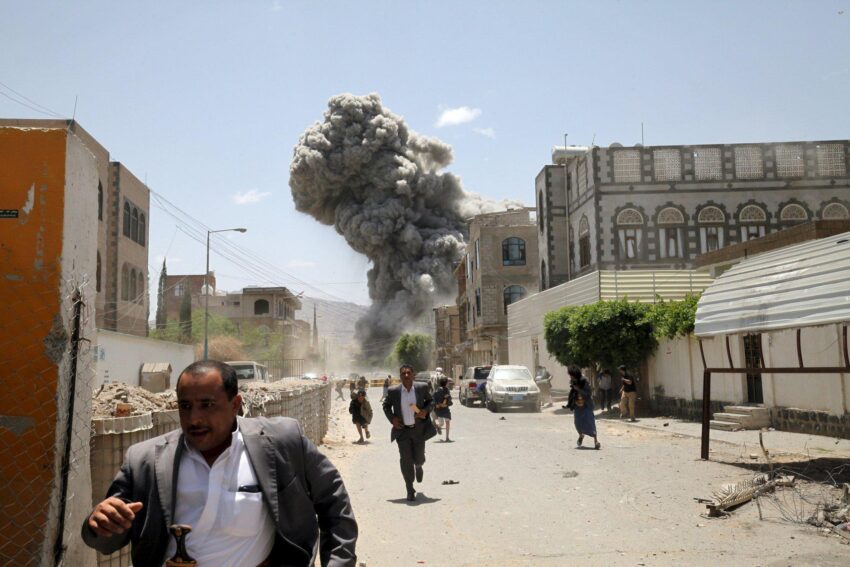Escalating Tensions: Houthi Claims of a U.S. Strike
The Houthi movement in Yemen has claimed that a recent airstrike, attributed to the United States, resulted in the death of a guard at a communications tower in Ibb governorate. This allegation comes amid a reported wave of over 20 strikes carried out against Houthi positions before dawn on Thursday. Despite the serious nature of these claims, there was no immediate reaction from Washington following the attacks.
Anees Alasbahi, a spokesman for the Houthi health ministry, took to social media to express this claim, stating, ‘An American aggression targeted the communications network in Ibb governorate, leading to the martyrdom of Abdulwasim Abdulwahab Zahir, the communications tower guard.’ This declaration forms part of the Houthis’ broader narrative of defending themselves against U.S. military actions in the region.
Intensified Strikes and Claims of Casualties
Reports from the rebels’ media outlet, Al-Masirah, indicated that over 20 airstrikes hit Saada province, a key stronghold for the Houthis in northern Yemen. The same report suggested that U.S. forces conducted strikes on vehicles in areas south of Sanaa, the Houthi-controlled capital, as well as in Saada. This escalation highlights the high-intensity conflict currently affecting the region.
In a further claim, Houthi military spokesperson Yahya Saree asserted that the group successfully shot down an ‘American MQ-9 drone’ which was allegedly conducting hostile operations in the Hodeida region. This statement illustrates the Houthis’ ongoing efforts to counter U.S. aerial operations in their territory.
U.S. Denials and Maritime Security Concerns
On Wednesday, the Houthis reported that five individuals lost their lives due to two rounds of airstrikes on Hodeida province. They specifically pointed to a strike that resulted in one casualty at the Red Sea port city of Ras Issa. However, maritime security experts from Ambrey contradicted this claim, asserting that they had received a credible report indicating that U.S. forces did not target the port. This suggests discrepancies in the claims made by the Houthis regarding the airstrikes.
Ambrey emphasized that ‘no damage to port infrastructure or merchant vessels had been reported,’ highlighting the complexities surrounding attribution of blame for strikes in the conflict-riddled region.
Ongoing Air Campaign and Regional Impact
Since Washington initiated its air campaign against the Houthis on March 15, rebel-held areas of Yemen have faced almost daily bombardments attributed to U.S. forces. The intensity of these operations has prompted the United States to deploy a second aircraft carrier group to the Middle East, reinforcing its commitment to deterring aggression and ensuring the uninterrupted flow of commerce in the region.
This sustained campaign follows a temporary ceasefire during which Houthis had suspended their attacks on shipping in solidarity with Gaza. Since Israel’s cessation of aid to the Palestinian territory, however, the Houthis have resumed strikes not only against U.S. vessels but also against Israeli targets.
The Houthi Agenda: A Coalition Against Western Influence
The Houthis are part of what is termed the ‘Axis of Resistance,’ a coalition of Iranian-backed groups in the Middle East unified against Israel and U.S. interests. Their recent resurgence in attacks on maritime vessels reflects a strategic shift aimed at reasserting their presence in the region, which has seen significant global logistical ramifications.
In the past two years, the Houthis’ aggressive campaign against merchant ships has caused many shipping companies to avoid routes through the Red Sea and Suez Canal—key transit points for about 12 percent of the world’s maritime traffic. This resultant diversion around Africa’s southern tip has led to increased costs, contributing to inflation in global shipping prices.







